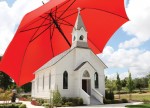
By Eric Spacek, JD, ARM
According to the U.S. Fire Administration (USFA), arson is the leading cause of fires in the United States, resulting in more than $1 billion in property loss each year. USFA recently reported that approximately 30,500 intentional structural fires occurred over the last year.
 By nature, places of worship are often easy targets for arsonists. This is for several reasons, including:
By nature, places of worship are often easy targets for arsonists. This is for several reasons, including:
- Buildings are unoccupied for significant periods of time during the week;
- Activity schedules are predictable;
- Doors and windows are sometimes left unlocked;
- Security systems are often lacking; and
- Arsonists, vandals and other criminals may target churches because of their beliefs.
These attacks might seem random in nature; but, upon further inspection, they are not random at all. More than 1,300 houses of worship are affected by arson fires annually. The mental and emotional loss that can be experienced after a church fire due to arson can be as great as the physical damage itself. Many church members view their place of worship as a safe haven, and do not think about the potential for crime.
Reduce the risk
To help reduce the risk of arson, consider the following precautionary measures.
External Security
- Illuminate exterior buildings, entrances and parking lots.
- Consider the installation of motion-activated lighting near doors and windows.
- Keep doors and windows locked when building is unoccupied.
- Keep shrubbery and trees trimmed to eliminate potential hiding places for arsonists.
- Do not allow church signs to block the view of the building.
- Store ladders and tools in a locked shed or inside the building.
- External stairways, fire escapes and roof top access should be secured at all times.
- Paint the building with a light color to make a human figure more readily seen at night.
- Keep track of and limit the disbursement of building keys.
- Consider fencing areas or sides of the building that are not readily visible to patrols or neighbors.
- Make sure exterior doors are of solid core construction.
- Keep the property free from boxes, leaves, trash, wood and other combustible debris.
- Park church vehicles in differing locations throughout the week to vary routine.
- Consider installing video surveillance at entrances and other key areas.
Internal Security
- Use properly installed deadbolt locks on all exterior doors.
- Windows that can be opened should have adequate locks on them.
- Consider wrought iron protection for windows for additional protection from break-ins.
- Make sure all flammable liquids are stored in an Underwriter’s Laboratory listed fire cabinet away from any heat sources.
- Consider installing a fire sprinkler suppression system.
- Installation of a combination burglar and fire alarm with a phone dialer should be considered.
- Make sure smoke and heat detectors are operational and that fire extinguishers have been regularly serviced.
- Restrict access to areas containing valuable or combustible materials by locking interior doors.
General Precautions
- Ask and promote neighborhood watches to alert police if anything suspicious is seen on church property.
- Develop a positive relationship with local law enforcement and invite them to patrol the property during the overnight hours.
- Do not advertise on church signs or bulletins when the church will not be in use.
- Keep church leaders informed of problems.
These simple, practical steps can drastically help prevent or reduce arson-related incidents or losses. Taking proper safety precautions will help to ensure churches and other religious organizations are better prepared against arsonists and other criminals.
Eric Spacek, JD, ARM is Senior Church Risk Management & Loss Control Manager at GuideOne Insurance in West Des Moines, IA.


